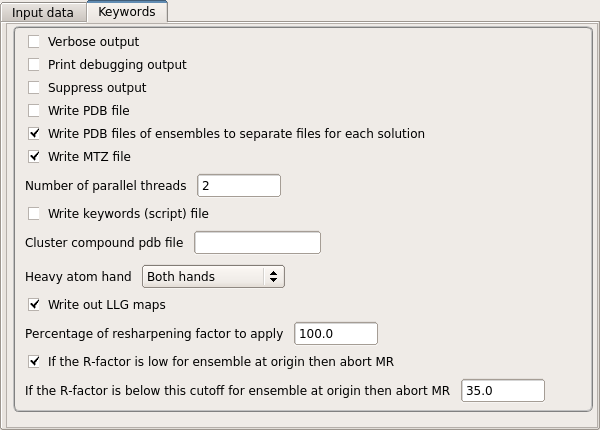
When solving a structure using anomalous data, it can be useful to look for (additional) anomalous scatters which can be used to improve the phasing calculation, or in order to locate anomalous scattering atoms such as sulphurs which may help in building the structure. Anomalous scatterers may be located by using the anomalous differences in combination which phases from a partial structure, for example from molecular replacement.
Input
In order to generate an optimal anomalous map, the reflection data (which must include anomalous pairs of reflections) and a set of atomic coordinates (to provide phase information) are required.
The input data include a set of observations (1), which may be anomalous intensities or amplitudes, and a partial model for a significant portion of the known scattering density (2). A set of resolution limits may optionally be specified to reduce the noise due to missing low resolution terms or larger phase errors at high resolution.
The composition of the unit cell must also be specified, to allow for the contribution of unaccounted for scattering matter to be evaluated. This may be specified in terms of molecular weights or sequences. First select the type of information to be provided (3), and then provide the required information in the boxes below.
Keywords

For documentation of the advanced options, see the Phaser documentation.